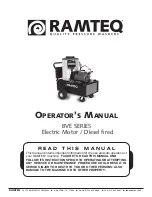
Page EN-26 Basic washing tips
The right washing detergent
– Do not use other cleaning agents, such as
scouring powder, household cleaners, etc .
These will damage the appliance and your
laundry .
Fabric-care products
– Do not use fabric softener in the same
wash cycle as starch, fabric conditioner, or
finishes .
– Before dispensing viscous fabric-care
products, mix them together with a little
water to thin them out .
– Only use powder starch according to the
instructions on the packet and not with high
temperatures, or it may form clumps .
The right dosage
The motto “more is better” does not apply to
detergents and fabric-care products . They
must be dosed properly to achieve the perfect
wash result . Here are some tips:
– If necessary, use a smaller dosage of de-
tergents and fabric-care products if the
drum is not filled completely . For exam-
ple, for half loads, only use about half the
amount needed for a full drum .
– Always adjust the amount of detergent to the
respective hardness of the water . If your tap
water is soft, you need less detergent . In-
formation about the water hardness in your
area is provided by the waterworks respon-
sible . The water hardness is also shown on
the invoice from your water supplier .
– Dose detergent according to how dirty
your laundry is . Laundry that is less dirty
requires less detergent .
– Highly concentrated detergent (also known
as compact detergent) in particular re-
quires accurate dosage . Even minor differ-
ences can have significant effects .
The following wash results are a sign of incor-
rect dosage of detergent .
Too much detergent:
– Heavy foam formation
– Poor washing and rinsing result
– Skin irritation caused by leftover detergent
in the clothing
Not enough detergent
– Laundry turns grey
– “Grease marks” (grey clumps of grease
and dirt) on laundry
– Build-up of limescale deposits in the drum,
heating elements and/or laundry
Environmentally friendly
washing
– The most efficient cycles with regard to
energy and water consumption are gener-
ally those with a longer duration and lower
temperatures .
– The ECO 40–60 and 20 °C cycles are ef-
ficient in terms of combined energy and
water consumption:
– The ECO 40–60 cycle is suitable for
cleaning normally soiled cotton laundry
that is declared to be washable at 40 °C
or 60 °C and that can be washed togeth-
er .
– The 20°C cycle is suitable for cleaning
lightly soiled cotton laundry that can be
washed at a nominal temperature of
20 °C .
– You can save energy and water if you use
the specified maximum amount of laundry .
















































